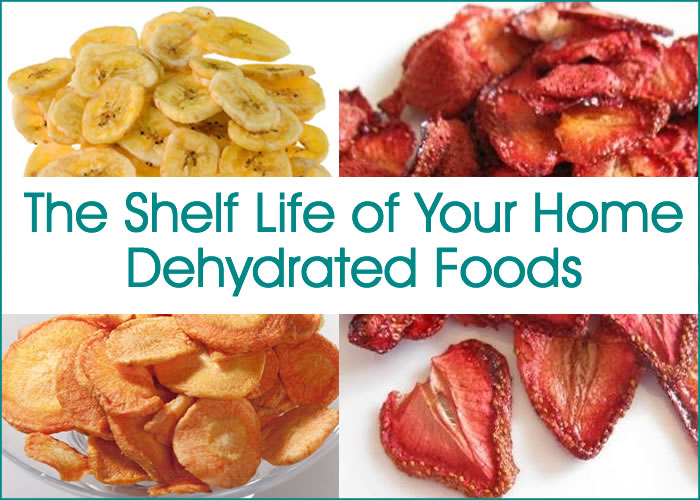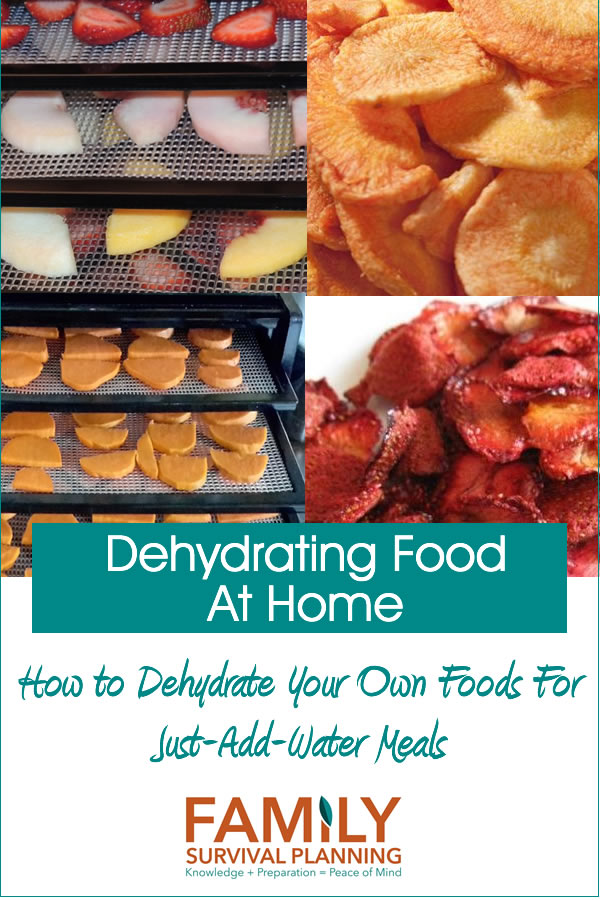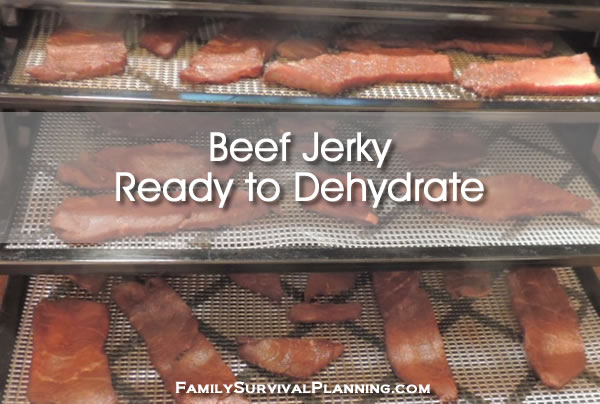- HOME
- Preserving Food
- Vacuum Sealers
Using Vacuum Sealers For Food Storage is a Snap (or a suck)
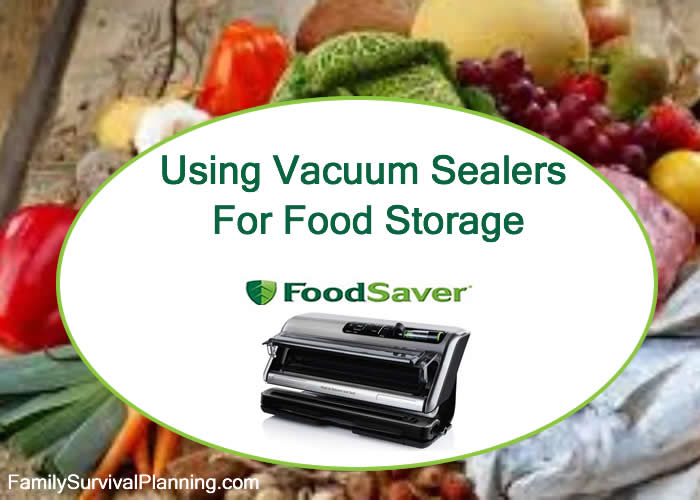
I LOVE my FoodSaver Vacuum Sealer. I purchased it last summer as well as the Excalibur Dehydrator and have used them together to add another method of preserving food for storage.
Invest in emergency food storage now and enjoy peace of mind for the next 25 years. Don't miss out on the savings!
Dehydrated peaches, pears, mushrooms, summer squash, tomatoes, apples, mangoes, and broccoli, and more are sealed in FoodSaver bags or canning bottles, if I can keep them around long enough to put into my storage in the basement (we use them a lot).
Some foods are sealed in bags and some in canning bottles but you will need to purchase the attachment (pictured below) to use with canning bottles. Although I do a lot of canning, vacuum packing is easier and works great for dehydrated foods, brown sugar, coconut, spices, etc.
A couple of readers have asked questions about vacuum sealing food, the shelf life, and the use of oxygen absorbers with sealing.
So let's address a few of those questions:
Q: I seal pack a lot of food for long term storage. The packs are incredibly tight. Do I need to add an oxygen absorber?
If you are sealing dry food products, such as macaroni, rice, beans, etc., there will always be small spaces between each piece. I would recommend placing an oxygen absorber package in the container to help remove any residual oxygen that may be trapped inside or around these types of products (like macaroni) and not removed during the relatively quick vacuum process. This is especially important for long term storage.
Q: How long will dehydrated foods i.e. jerky, fruits, veggies, instant mashed potatoes last when vacuum sealed with an O2 absorber inside the bag?
The use of O2 absorbers is your choice. The smaller the food particles, the more unlikely it is that you will need O2 absorbers (see above question). I personally don't use 02 absorbers in any of my vacuum-packed foods.
As for the shelf life, it does depend on the food type and the environment of your storage area. The cooler the storage area, the longer the shelf life. (Check this list of some food types and their shelf life.)
If you are dehydrating food yourself, vacuum sealing will give most foods a shelf life of 1-2 years, again, depending on the food type and the temperature of your storage area, but I have stored them 3-4 years without any degradation of the food.
Q: How can I use a vacuum pack heat sealer in the best way for long term shelf storage ...i.e., not in the freezer. Should I use dry ice in the bags or canning jars or is that necessary?
It is not necessary to use dry ice along with vacuum packing - not in the bags and not in canning jars - as they basically do the same thing: extract the oxygen from the container.
There are three elements to consider when packaging food for long term storage: oxygen, moisture, and microorganisms (spoilage or illness-causing bacteria). So for long term storage, we need to minimize all three with whichever method is best for a particular food product.
Dehydrated or Freeze-Dried: Dehydrated (dry foods) and freeze-dried foods are excellent to store long term without refrigeration or freezing as long as the oxygen is removed and the moisture content is low. This can be accomplished with a vacuum sealer, oxygen absorbers, or dry ice (depending on the type of container used).
FoodSaver Jar Sealer
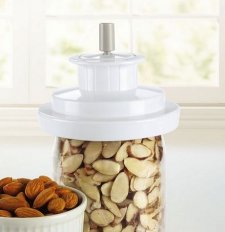
This is the jar sealer I mentioned above. It works so slick! One that fits regular size canning jars and the other for the wide mouth. I bought the wide mouth because I read a lot of reviews and several people mentioned that the regular size didn't work very well.
Well, I purchased the regular size anyway and found that it doesn't work as well. The solution (I also read in the comments) is to use two lids, putting them both on the bottle, then attach the jar sealer, and it seals just fine. The extra lid can easily be removed when the first lid is sealed.
To seal, just fill the bottle with dry food, put the usual Kerr or Ball lid on top, push the attachment onto the bottle, over the lid (or 2 lids for regular-mouth bottles), attach the small plastic hose (comes with the sealer) to the top of the attachment and the other end to the correct spot on the vacuum sealer and turn it on to vacuum and then seal. Wait until both the vacuum and the seal lights go off before removing the attachment. Done.
Bags, More Bags and Containers
FoodSaver provides so many options for containers that there is a bit of a learning curve (and expense if you want to try them all).
I mostly use the rolls because I can cut the bags to the size of the food, but it's good to have a package of pre-cut quart and gallon size handy also.
There are also bags that I use for fresh meat that have a fiber attachment (kind of like a thick napkin) just inside the bag that absorbs liquids when vacuuming. As the air is sucked out of the bag, the juices from the meat get pulled into the sealer (there is a catch tray to prevent a mess), but having the fiber to collect it keeps everything neat and clean.
I also use the zipper bags and the hand-held attachment for things like cheese or fresh vegetables that I'm going to keep in the refrigerator and may only use a little of it, then return it to the refrigerator. Very handy!
The main reason I recommend this sealer is because I have used it — a LOT — for everything including storing dehydrated foods, freezing meat, vegetables and fruits to prevent freezer burn, keeping nuts and seeds from going rancid in jars, and everything I can think of that would benefit by preserving with this method.
It is truly one of the MOST used appliances in my kitchen. There are many sizes to choose, from hand-held to the most expensive with all the "whips and jingles". They start at about $50 and go up from there. So if you can't afford the most expensive, there's a price for everyone including about $17 for the hand-held (and it works great!).
DISCLAIMER: This article contains affiliate links but I purchased my FoodSaver Vacuum Sealer with my own money and was not asked to review it.

